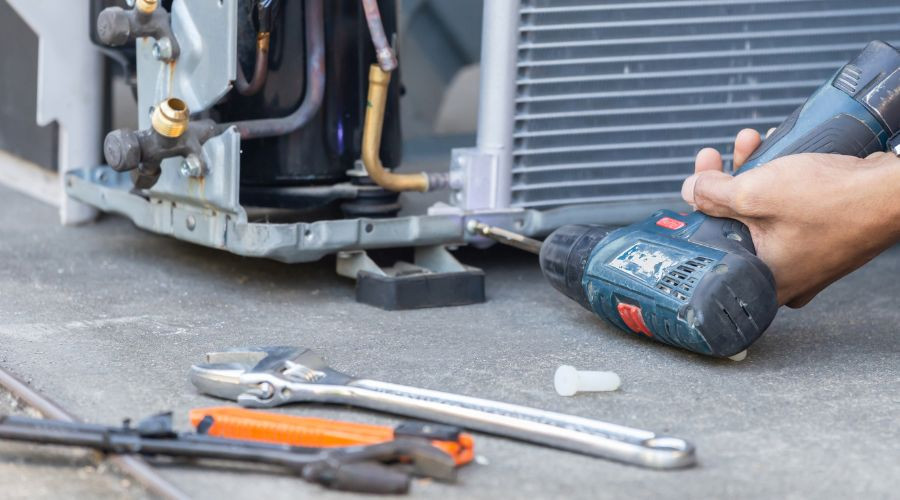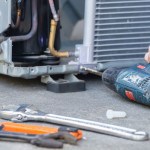How to Know When Air Conditioner Repair May Be Needed
Recognizing the early signs that an air conditioning unit requires repair is essential for maintaining comfort and efficiency in any home. An AC system that operates efficiently not only ensures a pleasant indoor environment but also helps minimize energy costs and prolongs the unit's lifespan. This blog explains indicators that an AC unit may be experiencing problems.
Loud Sounds
 Loud or unusual sounds from an AC unit are often early indicators of underlying issues that require attention. Understanding these sounds and their potential causes can help homeowners address problems swiftly, maintaining the unit's efficiency and preventing further damage.
Loud or unusual sounds from an AC unit are often early indicators of underlying issues that require attention. Understanding these sounds and their potential causes can help homeowners address problems swiftly, maintaining the unit's efficiency and preventing further damage.
- Banging or Clanging: These sounds typically suggest loose or broken components within the compressor or fan. Such noises often indicate that a part has come loose or is unbalanced, requiring immediate evaluation to prevent more extensive damage.
- Hissing: A hissing noise may point to a refrigerant leak, which can compromise the cooling efficiency of the system. Refrigerant issues require professional intervention to restore proper function and ensure safe operation.
- Rattling: Often caused by loose screws or unsecured parts, a rattling noise may seem minor but should not be ignored. Over time, these vibrations can lead to further deterioration of the system, so timely maintenance is advisable.
- Squealing or Screeching: High-pitched sounds usually result from worn-out belts or motor bearings. These components need immediate replacement to prevent system breakdown and avoid costly repairs.
- Buzzing: Electrical issues, such as faulty wiring or failing components, commonly produce a buzzing sound. This noise signals the need for a professional inspection to ensure the electrical safety and proper function of the unit.
Each of these sounds indicates a specific problem area within the air conditioning system. By diagnosing and remedying the cause of these noises promptly, homeowners can maintain their AC performance and prevent minor issues from becoming major repairs.
High Energy Bills
 Skyrocketing energy bills often signal that an air conditioning unit is operating inefficiently, which warrants immediate investigation. Various factors can contribute to increased energy consumption, indicating the need for repair, replacement, or routine maintenance.
Skyrocketing energy bills often signal that an air conditioning unit is operating inefficiently, which warrants immediate investigation. Various factors can contribute to increased energy consumption, indicating the need for repair, replacement, or routine maintenance.
- Clogged Filters: Over time, air filters can become clogged with dust and debris, hindering airflow and forcing the system to consume more energy to maintain desired temperatures. Regular filter replacement is essential to ensure efficiency.
- Refrigerant Leaks: Insufficient refrigerant levels, often due to leaks, can diminish cooling performance and prolong system operation. This inefficiency causes spikes in energy usage and necessitates professional repair to restore optimal function.
- Aging Systems: Older AC units naturally lose efficiency as they age and may require more frequent repairs. Investing in a new, energy-efficient model can lead to significant cost savings over time.
- Malfunctioning Components: Issues with vital parts such as thermostats, motors, or compressors can compromise performance. These components often need repair or replacement to restore system efficiency and reduce energy costs.
- Improper Sizing: An AC unit that is too large or too small for a home's cooling needs can result in frequent cycling and excessive energy use. Evaluating system size and performance can determine whether a replacement is necessary.
By promptly identifying and addressing these inefficiencies, homeowners can optimize their AC's performance, reduce energy consumption, and maintain comfortable indoor environments.
Uneven Cooling or Airflow Problems
Uneven cooling or airflow problems are common indicators that something is amiss with an air conditioning system. When some rooms cool quickly while others remain persistently warm, or if there is a noticeable lack of cool air or poor airflow, it signals potential underlying issues requiring attention.
- Blocked or Dirty Filters: Clogged filters frequently cause restricted airflow, preventing even air distribution and resulting in inconsistent temperatures across different areas of the home. Regular cleaning or replacement of filters can often resolve these issues.
- Ductwork Issues: Leaky, disconnected, or poorly insulated ducts can result in cooled air escaping before reaching certain rooms, causing disparities in room temperatures. Inspecting and repairing ductwork can help maintain consistent airflow and cooling.
- Improperly Sized System: An AC unit that is too large or too small for the residence can lead to uneven cooling. A system that's too large may cool the air too quickly without adequately dehumidifying, while a small system may struggle to cool larger areas, leaving some rooms warm. A professional evaluation can determine if the system size is appropriate for the home.
- Thermostat Problems: Faulty or improperly placed thermostats can result in inaccurate temperature readings, leading to poor system performance and uneven cooling. Ensuring thermostats are functioning correctly and situated in optimal locations can help mitigate these issues.
- Blocked Vents or Registers: Furniture placement or debris blocking vents and registers can reduce airflow to specific rooms, impacting even cooling. Ensuring unobstructed airflow can restore balanced temperatures throughout the home.
Identifying the root cause of uneven cooling and airflow problems is essential for improving the indoor climate and maintaining energy efficiency.
About Tiger Temperature
Tiger Temperature has licensed and highly trained HVAC technicians who have the experience to provide the right solutions carried out to code. They provide preventative maintenance and 24/7 emergency services. Contact them for AC repairs in Thibodaux, LA.



